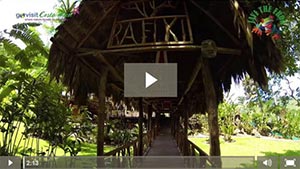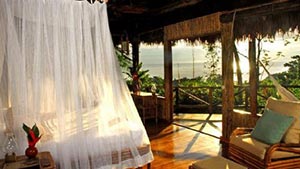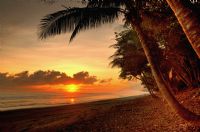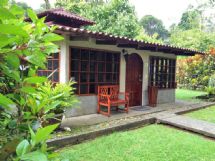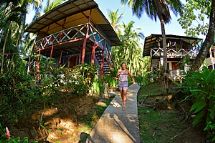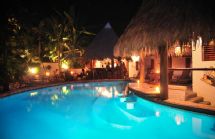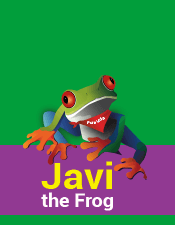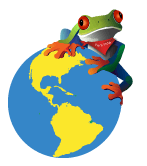Sitting along the Pacific Coast and stretching from the Osa Peninsula to Panama, South Puntarenas is teeming with natural beauty thanks to its diverse flora and fauna.
From stunning, secluded beaches to eco-tourism hotspots, Costa Rica's southernmost Pacific shoreline is an outdoor adventurer's dream.
These shores are ranked as some of the world's most pristine, and many are prime spots for surfing enthusiasts.
As the climate is hot and tropical throughout the year with a significant amount of rainfall, forests here are among some of the most lush and dense in the country.
Home to a sprawling 23 miles of golden shoreline, several hiking trails and 13 major ecosystems, Corcovado National Park is one of South Puntarenas' finest.
Considered to be the crown jewel of Costa Rica's park system, Corcovado is the country's largest park and stretches across 103,290 acres - nearly a third of the Osa Peninsula.
Corcovado is one of the most popular destinations for travelers coming here because of the virgin lowland rainforest and diverse wildlife that resides within the park's limits.
Roughly 10 percent of mammals found in the Americas populate Corcovado, and it is home to the largest population of macaws. There are 140 species of mammals, 400 bird species, 116 amphibian species, 40 species of fish, 6,000 species of insects, 220 species of butterflies and 500 tree species!
If that isn't reason enough to visit Corcovado, the trail system throughout the park is so extensive it would take hikers two to three days to trek from one side to another, which isn't uncommon as Corcovado allows camping. Be sure to make a stop at Corcovado Lake and La Llorona Waterfall.
The southern portion of Puntarenas encompasses one of the wildest and most beautiful parks of Costa Rica, Corcovado National Park.
Small Beach Towns
As South Puntarenas sits along the shoreline, it's no surprise this region boasts great surfing spots.
The small town of Pavones is one of the best places to surf in the area, but the rip currents can get rough, making it best for experienced surfers. While this town is quite small, it still offers great Costa Rican accommodations with plenty of local businesses, yoga, fishing, horseback riding, hiking and more.
Other popular locations include Playa Uvita, Playa Tortuga and Puerto Jimenez.
Those travelers seeking a bit of seclusion during their trip to South Puntarenas can venture to Drake Bay, which offers scenic coastline and plenty of activities to enjoy. Swimming, scuba diving, bird-watching, sport fishing and kayaking are just a few of the available options.
Map of South Puntarenas
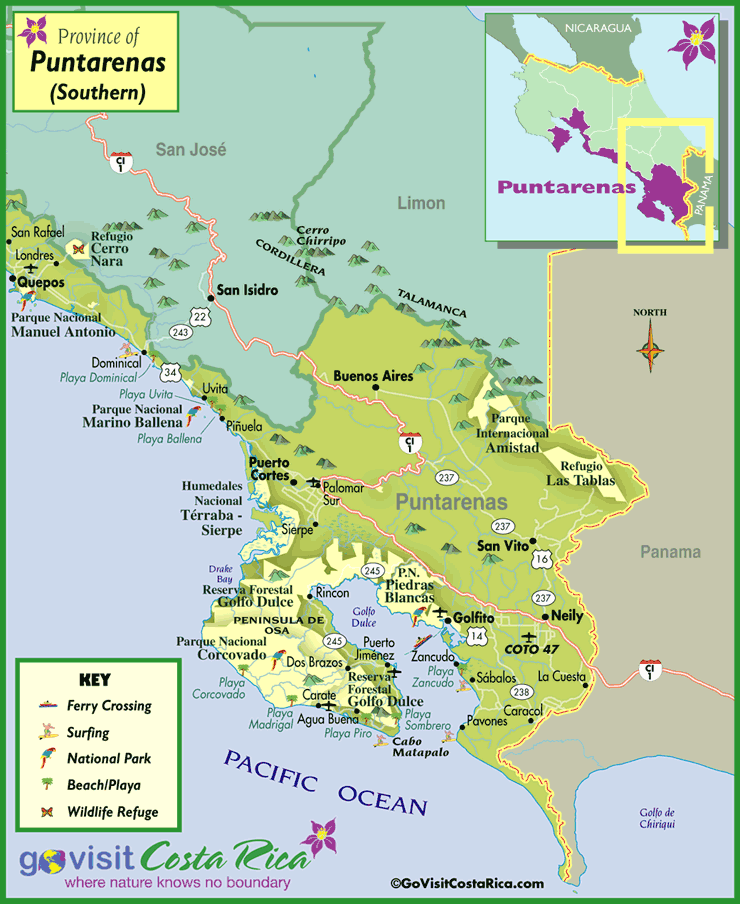
Ideal for hiking, diving / snorkeling and kayaking, Caño Island sits 20 kilometers offshore from Drake Bay, and serves as a biological reserve and important archaeological locale. The island protects artifacts from pre-Columbian times, including the mysterious spherical stones, which scientists are unaware of their origin.
Caño Island also served as a pirate refuge during the 17th and 18th century.
But Caño Island is even more well known for its unparalleled offshore diving because of the large number of coral reefs in the area. Although diving is highly regulated because of the fragile ecosystems under the water's surface, there are five dive sites around the island.
It's possible to catch a glimpse of manta rays, Olive Ridley sea turtles, dolphins and both Humpback and Pilot whales.
Getting to South Puntarenas
Travelers landing at Juan Santamaria International Airport in San Jose can get to South Puntarenas via car or bus easily.
As there are many developed roads in the region, cars are a great way to get here and around.
The drive is about 220 kilometers, which generally takes about three and a half hours.
12 Days / 11 Nights or 10 Days / 9 Nights
Starting at $2,352 per person
11 Days / 10 Nights
Starting at $3,874 per person





